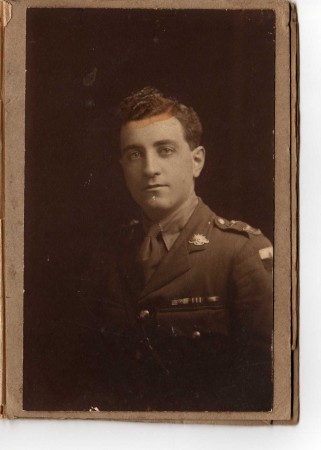WWI Stories – Stanley Young
Sunday Creek
Faye Arnold shares the story of her Great Uncle, Stanley Young.
Stanley Young, my Grandmother’s brother, was the youngest child of Jane Crawford and George Young and was born at Sunday Creek in 1895.
Enlisting in October 1914, he served in the 8th battalion and landed at Anzac Cove on 25 April 1915. He took part in the battle for Krithia but was evacuated from Gallipoli with dysentery in August. During the following three years he spent in France, Stan was awarded the Military Medal for his part in the battle for Broodseinde Ridge near Passchendale in October 1917. He was promoted to Second Lieutenant soon after and then Lieutenant seven months later in 1918. He was awarded the Military Cross on 15 October 1918 for “indomitable courage and leadership during a raid, when he led his party against two enemy strong points and mopped them up, he himself killing five of the enemy and putting a machine gun out of action. After the raid he picked up his sergeant, who had been badly wounded and carried him back through a regular hail of machine gun bullets.”
Stan was also awarded a bar to the Military Cross on 1 February 1919 for “conspicuous gallantry and able leadership near Chuignes, 23 August 1918, leading three charges on enemy machine gun post and taking 30 prisoners. In reconnoitring a concealed machine gun post, he was called on to surrender, but answered by throwing a bomb, and, waving his men on, rushed the whole post.“
Stan wrote approximately 40 letters home during his time away to his mother and sisters. These letters were passed down to my father and then to me. I have transcribed the letters and researched the places and battles mentioned. I have also visited most of the places in Gallipoli and France where Stan served. Many of his letters graphically describe the battles he was involved in and the conditions Australian soldiers served in.
Unfortunately Stan’s stories, like many other soldiers, do not have a happy ending. He did not return to Australia until 1919 by which time the mother he had written to every week, had died. Stan took up a soldier settlement block in Mirboo North and tried dairy farming, but unfortunately the gas attacks he described in his letters had weakened his lungs and he consequently died in 1925 at the age of 29.






